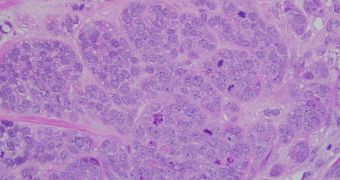An innovative combination of nanotechnology and an imaging technique called magnetic resonance imaging (MRI) will soon allow doctors to establish the locations of cancer tumors with great precision.
This will in turn enable surgeons to take out the diseased tissues earlier on, before cells can flake off it, and spread through the body. When this happens, experts refer to the cancer as having metastasized, or spread throughout the body. Stage IV cancer (metastasis) is incurable, and always fatal.
If a diagnostic is placed in time, then doctors have more options when it comes to addressing the condition. Chemotherapy and radiotherapy – the two main approaches used to address cancer in general – are more effective as well.
This is why being able to obtain an earlier diagnostic is such a high priority on doctors' list of priorities when it comes to addressing this condition. Experts at Case Western Reserve University (CWRU) were recently able to bring this goal closer to reality.
Their investigation was conducted on mouse models of breast cancer. The rodents had advanced cancer that was about to go into metastasis, and the team used its new approach to try and get an early diagnostic. The method turned out to yield great results.
Details of how the new series of experiments unfolded were published in this week’s online issue of the American Chemical Society's esteemed scientific journal, ACS Nano. The work was conducted by an interdisciplinary team, consisting of experts from five departments at the university.
“Micrometastases can’t be seen with the naked eye, but you have to catch them at this stage – see the exact spots they’re located and see them all. Even if you miss only one, you prolong survival, but one metastasis can still kill,” researcher Efstathios Karathanasis says.
He holds an appointment as an assistant professor of biomedical engineering and radiology at CWRU, and was also the senior author on the ACS Nano paper. “We target [overly-expressed surface molecules called] integrins,” the expert adds. “Normal blood vessel walls don’t present integrins towards the blood site unless cancer cells attach there,” he goes on to say. The first stops cancer cells take once they flake off tumors include the liver, spleen or lungs.
By checking integrins levels at these locations, experts will soon be able to detect micrometastases while they can still be extracted, and the patient saved.

 14 DAY TRIAL //
14 DAY TRIAL //